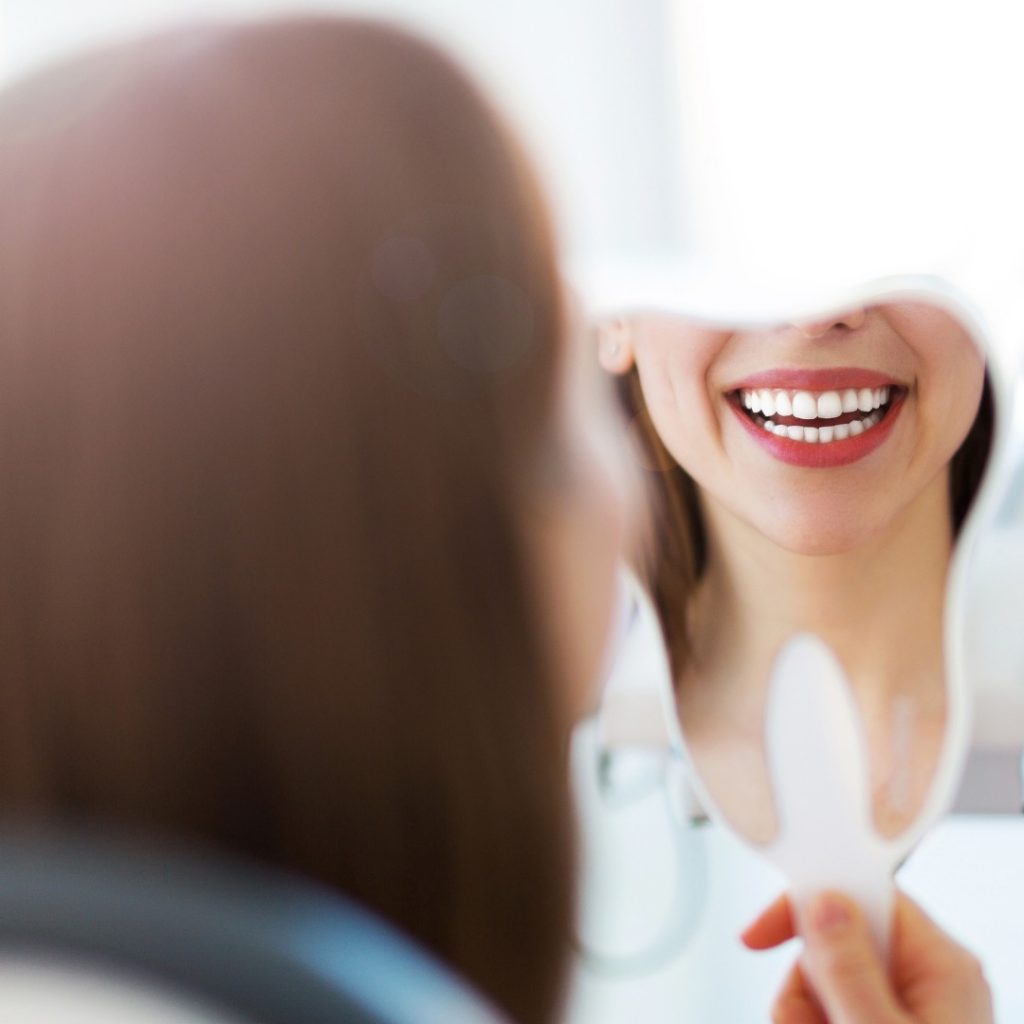
Finding Relief from Obstructive Sleep Apnea Through Proven Myofunctional Therapy
Struggling with obstructive sleep apnea (OSA) and looking for alternatives to CPAP therapy? At the Center for Dental Sleep Health in Nashua, Dr. Stephen Ura offers effective solutions, including comfortable oral appliances and myofunctional therapy, which involves exercises for the mouth and throat to improve sleep quality and reduce daytime sleepiness.
Research shows that oropharyngeal exercises can lead to a 39 percent reduction in OSA symptoms by strengthening upper airway muscles and minimizing collapse during sleep. These exercises also help with daytime fatigue, headaches, heartburn, and TMJ pain, and many patients notice reduced snoring after a few weeks.
Take the first step toward better sleep—call our Nashua, NH, dental office at (603) 886-4300 to begin your treatment journey. We welcome patients in Nashua and surrounding areas like Hudson, Merrimack, and Milford, NH.
What Is Obstructive Sleep Apnea?
Obstructive sleep apnea occurs when your upper airway becomes blocked during sleep, causing breathing interruptions that can happen dozens or even hundreds of times per night. This happens when throat muscles relax excessively, the tongue falls backward, or the soft palate collapses while you’re sleeping.
These interruptions force your brain to partially wake you to resume breathing, preventing you from getting the deep, restorative sleep your body needs. The resulting fragmented sleep pattern leads to daytime fatigue and decreased cognitive function and can contribute to serious health conditions, including heart disease and diabetes.
Risk factors for OSA include:
- Excessive weight or obesity
- Large neck circumference
- Anatomical features like a recessed jaw
- Family history of sleep apnea
- Alcohol consumption before bedtime
- Smoking
- Nasal congestion or sinus issues


The Science Behind Myofunctional Therapy for Sleep Apnea Near Milford, NH
Myofunctional therapy targets the underlying causes of sleep apnea by strengthening the facial and throat muscles that maintain airway patency during sleep. This evidence-based approach has gained recognition in sleep medicine as an effective complementary treatment.
Some key benefits of mouth and throat exercises:
- Improved Muscle Tone: Strengthens upper airway muscles to reduce collapse during sleep
- Enhanced Airway Function: Encourages proper tongue positioning and nasal breathing
- Reduced Snoring: Many patients experience significant decreases in snoring intensity
- Complementary Approach: Works effectively alongside CPAP therapy or oral appliances
- Non-Invasive Solution: Provides a natural treatment option without side effects
- Long-Term Results: Creates sustainable improvement through consistent practice
Effective Mouth Exercises for Sleep Apnea

1. Tiger Yell
Open your mouth wide and stick your tongue out as far as possible, extending it toward your chin. Hold this position for five seconds initially, gradually increasing the duration to strengthen the muscles in the back of your throat. Repeat five to 10 times.
2. Tongue-to-Nose and Tongue-to-Chin
These simple exercises strengthen jaw muscles and improve tongue control:
- Extend your tongue upward toward your nose, holding for 10 seconds
- Next, extend your tongue downward toward your chin, holding for 10 seconds
- Repeat each position five times, gradually increasing repetitions as strength improves

3. Lip Trills
This exercise engages muscles around the lips while activating the tongue and throat:
- Purse your lips and produce a trilling sound (similar to a horse’s neigh) while exhaling
- Continue trilling for 15-20 seconds
- Repeat five to 10 times daily
4. Tongue Slide for Jaw Tension Relief
This exercise helps relieve tension in your jaw while strengthening tongue muscles:
- With your mouth closed, place the tip of your tongue against the roof of your mouth
- Slowly slide your tongue backward as far as comfortable
- While keeping your tongue in contact with the roof of your mouth, slowly open your jaw
- Hold this stretched position for five seconds
- Repeat for five sets, increasing duration gradually
Throat Exercises in Nashua, NH, to Improve Airway Function

1. Soft Palate Stretches
The soft palate (the roof of your mouth) plays a crucial role in maintaining airway patency during sleep:
- Close your mouth and breathe in through your nose
- Keeping your mouth closed, exhale through pursed lips, creating resistance in your throat
- Alternatively, open your mouth as if saying “ah” and hold for 15 seconds
- Repeat for 10 sets, resting briefly between each

2. Therapeutic Gargling
This simple yet effective exercise strengthens muscles in the back of the throat:
- Gargle with warm salt water for 30-60 seconds twice daily
- Focus on controlled, deliberate movements
- As strength improves, increase the gargling duration
3. Throat Stretches for Muscle Flexibility
These stretches improve the flexibility of throat muscles, reducing the risk of airway collapse:
- Gently tilt your head back
- Swallow while maintaining this tilted position
- Hold the stretched feeling for five to 10 seconds
- Repeat 10-15 times daily
Incorporating Exercises into Your Daily Routine
Consistency is key to seeing improvement in your sleep apnea symptoms. Here’s how to successfully integrate these exercises:
- Establish a Routine: Schedule specific times daily for your exercises (morning, lunchtime, evening)
- Create a Comfortable Environment: Find a quiet space free from distractions
- Start Gradually: Begin with fewer repetitions and increase as your muscles strengthen
- Track Your Progress: Keep a journal of your symptoms and exercise consistency
- Monitor Improvements: Note changes in snoring, sleep quality, and daytime alertness
- Combine with Other Treatments: Use alongside your oral appliance or CPAP therapy for maximum benefit
Most patients perform these exercises two to three times daily for optimal results. Research indicates that consistent mouth and throat exercises for at least 10 minutes daily over three months produce noticeable improvement in sleep apnea symptoms.

Frequently Asked Questions
How do mouth exercises help with snoring and sleep apnea?
Snoring and OSA occur due to relaxed airway muscles, poor tongue positioning, and mouth breathing during sleep. Regular oropharyngeal exercises tone the airway and tongue muscles while promoting nasal breathing, addressing these root causes directly.
Can mouth and throat exercises cure sleep apnea?
While incorporating these exercises can significantly reduce symptoms, they’re typically not a complete cure for moderate to severe OSA. Most cases of sleep apnea are best managed with a comprehensive approach combining myofunctional therapy with other treatments such as oral appliances, positional therapy, or CPAP machines as needed.
How quickly will I see results from these exercises?
Most patients notice improvement within six to eight weeks of consistent practice. Research shows optimal results after three months of daily exercise. Individual results vary based on OSA severity, consistency of practice, and whether other treatments are used concurrently.
Are these exercises suitable for everyone with sleep apnea?
These exercises are generally safe for most people with mild to moderate OSA. They’re particularly effective for individuals who can’t tolerate CPAP therapy or prefer a non-invasive approach. For severe OSA, these exercises work best as a complementary treatment alongside other therapies.
Dr. Ura Can Help Improve Your Sleep Quality
If you’re suffering from sleep apnea in Nashua or surrounding communities like Hudson, Merrimack, or Milford, NH, these proven mouth and throat exercises can significantly improve your condition when paired with professional treatment.
To schedule a consultation with Dr. Ura and learn more about our comprehensive approach to sleep apnea management, call us at (603) 886-4300. Don’t let another night of poor sleep impact your health and quality of life. Our team at the Center for Dental Sleep Health is ready to help you breathe easier and sleep better starting today.
